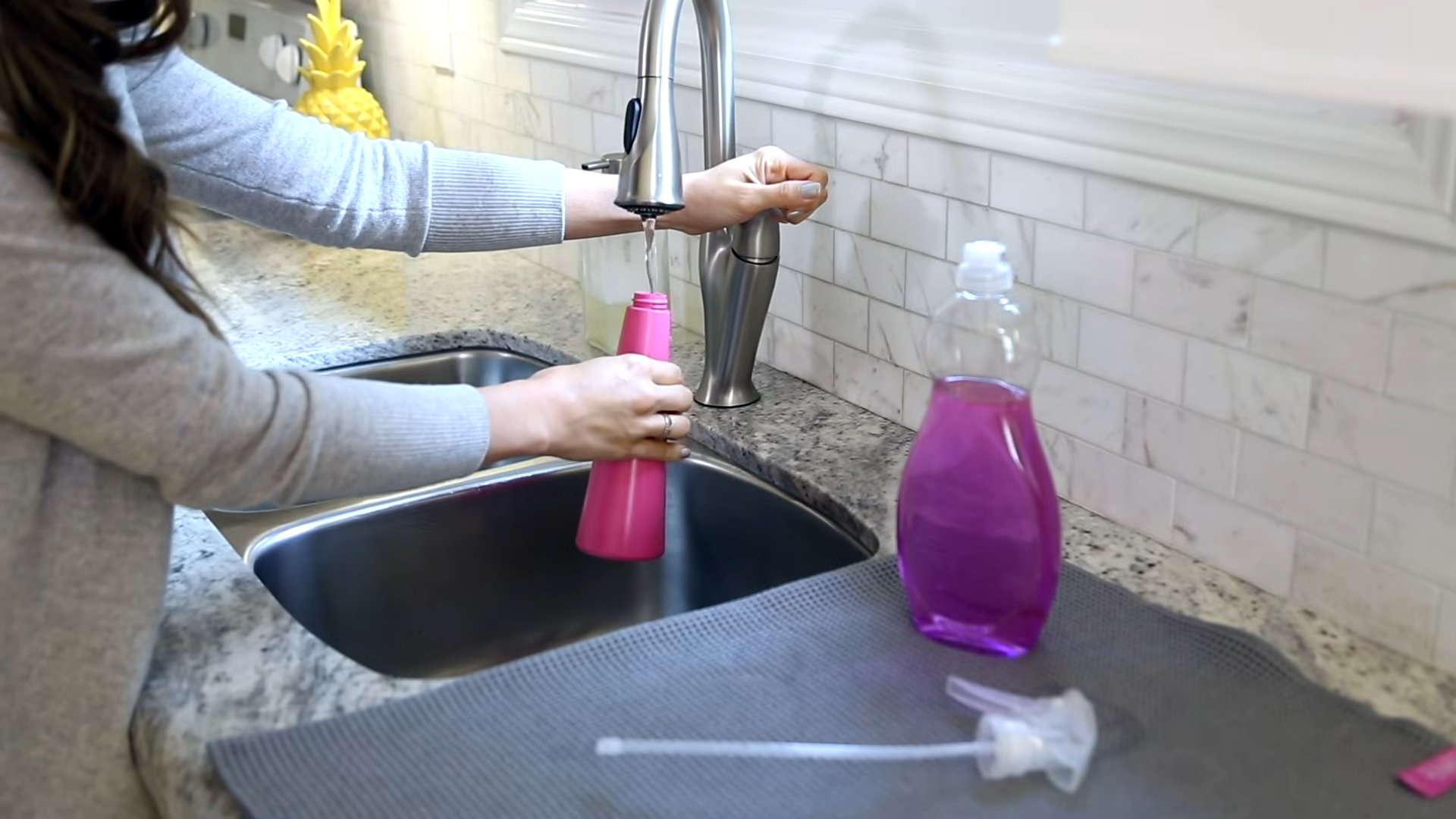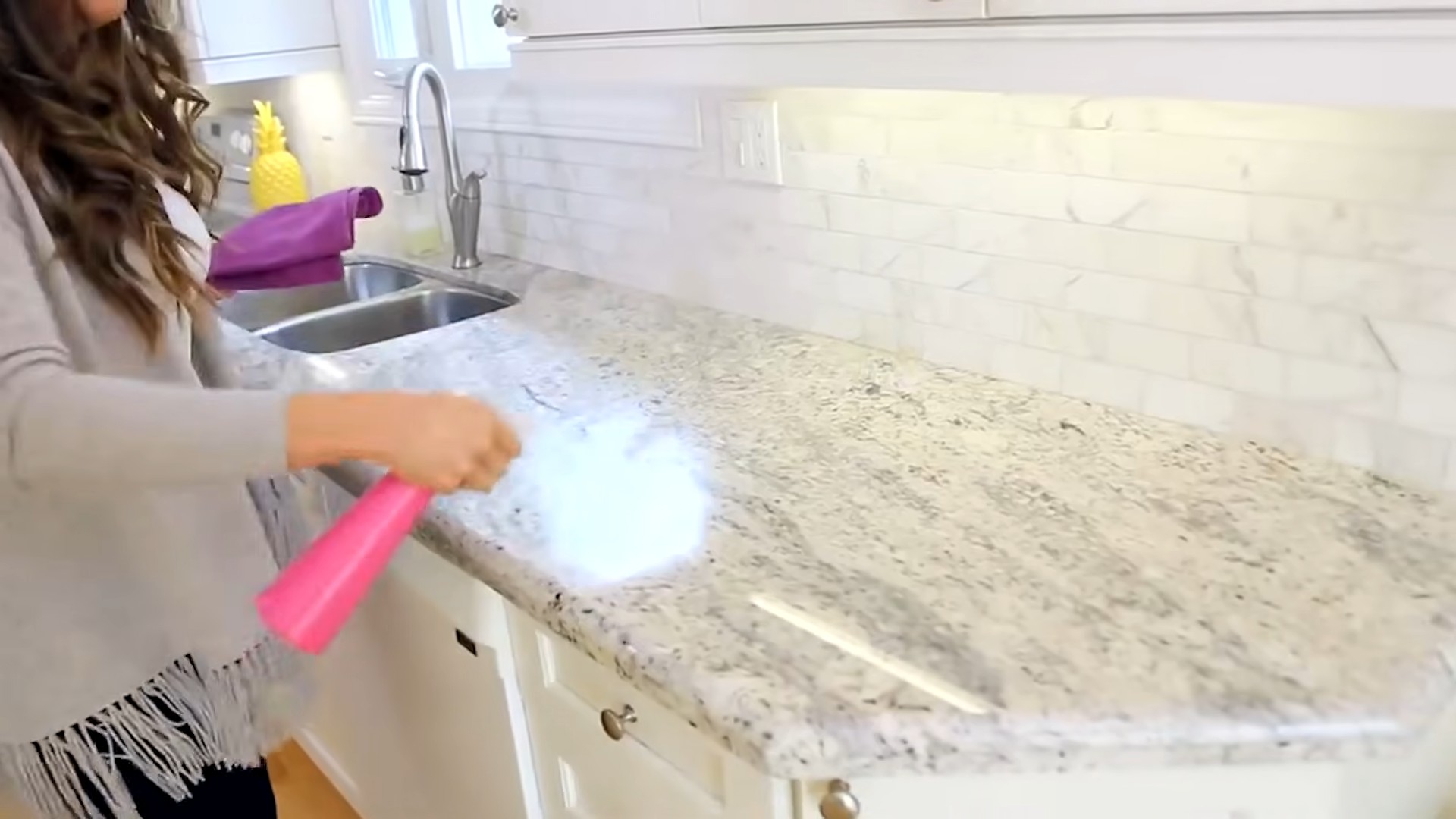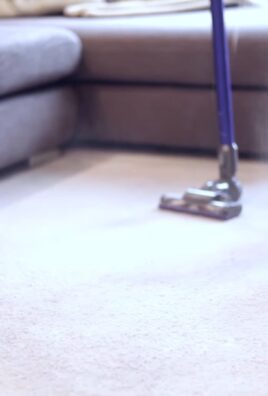Messy kitchen cleaning tricks – sound like something you desperately need in your life? Trust me, you’re not alone! We’ve all been there, staring at a kitchen that looks like a culinary explosion went off, wondering where to even begin. But fear not, my friend, because I’m about to share some game-changing DIY secrets that will transform your chaotic kitchen into a sparkling sanctuary.
For centuries, kitchens have been the heart of the home, a place for nourishment, connection, and, let’s be honest, a whole lot of mess! From the humble hearths of ancient civilizations to the modern, gadget-filled spaces we know today, the struggle to keep this vital area clean has been a constant. But these messy kitchen cleaning tricks aren’t just about aesthetics; they’re about creating a healthier, more enjoyable space for you and your loved ones.
Let’s face it, nobody enjoys spending hours scrubbing and scouring. Life’s too short for that! That’s why I’m so excited to share these simple, effective, and often surprising DIY hacks that will save you time, money, and a whole lot of elbow grease. Get ready to reclaim your kitchen and your sanity with these easy-to-follow tips!

DIY Kitchen Cleaning Hacks: Conquer the Chaos!
Okay, let’s be honest, we’ve all been there. The kitchen, once a haven of culinary creativity, has devolved into a disaster zone. Dishes piled high, grease splatters everywhere, and a lingering aroma that’s… questionable. But fear not, fellow home chefs! I’m here to share some of my favorite DIY kitchen cleaning hacks that will transform your messy space into a sparkling sanctuary. These are tried and true methods that I’ve personally used to battle kitchen chaos, and I’m confident they’ll work for you too!
Tackling the Dish Mountain: Overnight Soak Power!
The dreaded dish pile. It seems to multiply overnight, doesn’t it? Instead of facing it head-on with sheer brute force (which, let’s be real, nobody wants to do), let’s use a little science and a lot of soaking power.
What you’ll need:
* Your dirty dishes (obviously!)
* Hot water
* Dish soap (the grease-fighting kind is best)
* Baking soda (our secret weapon!)
* A large sink or tub
Step-by-step instructions:
1. Clear the area: First things first, clear out your sink or tub. Get rid of any clean dishes lurking in the shadows and make sure the drain is clear.
2. Hot water bath: Fill the sink or tub with hot water. The hotter, the better, as it will help loosen the grime and grease. Be careful not to burn yourself!
3. Soap it up: Add a generous squirt of dish soap to the hot water. I usually go for a couple of tablespoons, depending on the size of the pile.
4. Baking soda boost: Now for the magic ingredient: baking soda! Add about half a cup of baking soda to the soapy water. Baking soda is a natural deodorizer and abrasive, making it perfect for tackling stubborn food residue.
5. Submerge and soak: Carefully submerge all the dirty dishes in the water. Make sure everything is covered, even those sneaky plates hiding at the bottom.
6. Overnight soak: This is the key! Let the dishes soak overnight. This gives the hot water, soap, and baking soda time to work their magic, loosening the grime and making it much easier to scrub off.
7. Scrub-a-dub-dub: The next morning, drain the sink or tub and rinse the dishes with clean water. You’ll be amazed at how much easier they are to clean! Most of the food residue should wipe right off with a sponge. For any stubborn spots, use a scrubbing pad.
8. Rinse and dry: Give the dishes a final rinse with clean water and either let them air dry or dry them with a clean towel.
Grease Be Gone: The Power of Baking Soda Paste
Grease splatters are the bane of every kitchen. They seem to cling to every surface, creating a sticky, unpleasant mess. But don’t despair! A simple baking soda paste is all you need to banish that grease for good.
What you’ll need:
* Baking soda
* Water
* A bowl
* A sponge or cloth
* An old toothbrush (optional, for stubborn areas)
Step-by-step instructions:
1. Make the paste: In a bowl, mix baking soda with a small amount of water to create a thick paste. The consistency should be similar to toothpaste.
2. Apply the paste: Apply the baking soda paste to the greasy areas. This works wonders on stovetops, backsplashes, range hoods, and even inside the oven (make sure the oven is off and cool!).
3. Let it sit: Let the paste sit for about 15-20 minutes. This gives the baking soda time to absorb the grease and loosen it from the surface.
4. Scrub-a-dub-dub (again!): Use a sponge or cloth to scrub the area. For stubborn spots, an old toothbrush can be your best friend. The baking soda acts as a gentle abrasive, helping to lift the grease without scratching the surface.
5. Rinse and wipe: Rinse the area with clean water and wipe it dry with a clean cloth. You’ll be amazed at how easily the grease comes off!
6. Repeat if necessary: For particularly stubborn grease stains, you may need to repeat the process.
Cleaning the Microwave: Steam Power!
Microwaves are notorious for accumulating splatters and spills. Cleaning them can be a real chore, but this steam cleaning hack makes it a breeze.
What you’ll need:
* A microwave-safe bowl
* Water
* Lemon juice or vinegar (optional, for extra cleaning power)
* A sponge or cloth
Step-by-step instructions:
1. Fill the bowl: Fill the microwave-safe bowl with about one cup of water.
2. Add lemon juice or vinegar (optional): Add a tablespoon of lemon juice or vinegar to the water. This will help to loosen the grime and deodorize the microwave.
3. Microwave it: Place the bowl in the microwave and heat it on high for 3-5 minutes, or until the water boils and the microwave is filled with steam.
4. Let it sit: Leave the bowl in the microwave for another 5 minutes, allowing the steam to soften the splatters and spills.
5. Wipe it clean: Carefully remove the bowl from the microwave (it will be hot!). Use a sponge or cloth to wipe down the inside of the microwave. The steam will have loosened the grime, making it easy to wipe away.
6. Clean the turntable: Remove the turntable and wash it with soap and water.
7. Dry it off: Dry the inside of the microwave and the turntable with a clean cloth.
Freshening the Garbage Disposal: Lemon Power!
Garbage disposals can be a breeding ground for unpleasant odors. But a simple lemon hack can keep your disposal smelling fresh and clean.
What you’ll need:
* Lemon peels (from one or two lemons)
* Ice cubes
* Water
Step-by-step instructions:
1. Gather your ingredients: Save the peels from lemons after you’ve used the juice.
2. Turn on the water: Turn on the cold water to a slow, steady stream.
3. Toss in the peels: Toss the lemon peels into the garbage disposal.
4. Grind it up: Turn on the garbage disposal and let it run for about 30 seconds, grinding up the lemon peels.
5. Add ice cubes: Add a handful of ice cubes to the disposal while it’s running. The ice helps to scrub the blades and dislodge any food particles.
6. Rinse and repeat (if needed): Continue running the water and disposal for another minute to rinse away any remaining debris. Repeat the process if necessary.
Cleaning Cutting Boards: Vinegar and Salt Scrub
Cutting boards, especially wooden ones, can harbor bacteria and odors. A vinegar and salt scrub is a natural and effective way to clean and disinfect them.
What you’ll need:
* White vinegar
* Coarse salt (like kosher salt or sea salt)
* A sponge or cloth
* Hot water
Step-by-step instructions:
1. Rinse the cutting board: Rinse the cutting board with hot water to remove any loose food particles.
2. Vinegar bath: Pour white vinegar over the entire surface of the cutting board.
3. Salt scrub: Sprinkle a generous amount of coarse salt over the vinegar-soaked cutting board.
4. Scrub-a-dub-dub (you know the drill!): Use a sponge or cloth to scrub the cutting board vigorously, working the salt and vinegar into the surface.
5. Rinse and dry: Rinse the cutting board thoroughly with hot water and let it air dry or dry it with a clean towel.
Shining Stainless Steel: Olive Oil Magic
Stainless steel appliances can be beautiful, but they’re also prone to fingerprints and smudges. A little olive oil can bring back their shine.
What you’ll need:
* Olive oil
* A soft cloth
* Another clean, dry cloth
Step-by-step instructions:
1. Clean the surface: First, clean the stainless steel surface with a damp cloth to remove any dirt or debris.
2. Apply olive oil: Pour a small amount of olive oil onto a soft cloth.
3. Wipe with the grain: Wipe the stainless steel surface with the olive oil-soaked cloth, following the grain of the metal.
4. Buff it out: Use a clean, dry cloth to buff the surface, removing any

Conclusion
So, there you have it! Conquering a messy kitchen doesn’t require expensive gadgets or harsh chemicals. These simple, DIY cleaning tricks are game-changers, transforming your kitchen from a chaotic zone into a sparkling, inviting space. The beauty of these methods lies in their accessibility and effectiveness. You’re likely to have most of the ingredients already in your pantry, making them a cost-effective and readily available solution to your kitchen woes.
But why is this a must-try? Because a clean kitchen is more than just aesthetically pleasing; it’s essential for food safety and overall well-being. Eliminating grease, grime, and lingering odors creates a healthier environment for preparing meals and enjoying time with loved ones. Plus, let’s be honest, a clean kitchen simply makes cooking more enjoyable!
Beyond the basic methods outlined, there’s plenty of room for experimentation and personalization. For instance, if you’re tackling stubborn stovetop stains, try adding a tablespoon of baking soda to your vinegar solution for extra scrubbing power. For a refreshing scent boost, infuse your cleaning solutions with essential oils like lemon, lavender, or tea tree. A few drops can make a world of difference in creating a pleasant cleaning experience.
Consider these variations:
* Citrus Power: Instead of discarding citrus peels (lemon, orange, grapefruit), simmer them in water for a natural, fragrant cleaner. The citric acid helps cut through grease and leaves a refreshing scent.
* DIY All-Purpose Spray: Combine equal parts white vinegar and water in a spray bottle. Add a few drops of your favorite essential oil for a pleasant scent. This versatile cleaner works wonders on countertops, appliances, and even floors.
* Baking Soda Paste for Stubborn Stains: Mix baking soda with a small amount of water to form a thick paste. Apply the paste to stubborn stains on your oven, stovetop, or sink. Let it sit for a few minutes, then scrub gently with a non-abrasive sponge.
* Coffee Grounds for Drain Cleaning: Instead of tossing used coffee grounds, flush them down your drain with hot water. The grounds help to scrub away grease and grime, preventing clogs and keeping your drain smelling fresh.
We’re confident that these DIY cleaning tricks will revolutionize your kitchen cleaning routine. They’re simple, effective, and environmentally friendly. But don’t just take our word for it! We encourage you to try these methods and see the results for yourself.
The real magic happens when you put these tips into practice. So, roll up your sleeves, gather your supplies, and prepare to transform your kitchen. We’re eager to hear about your experiences! Share your before-and-after photos, your favorite variations, and any other tips you’ve discovered along the way. Let’s create a community of clean kitchen enthusiasts, sharing our knowledge and inspiring each other to maintain a sparkling and healthy cooking space. Remember, a clean kitchen is a happy kitchen, and these **messy kitchen cleaning tricks** are your ticket to achieving just that.
Frequently Asked Questions (FAQ)
1. Is vinegar safe to use on all kitchen surfaces?
While vinegar is a fantastic natural cleaner, it’s not suitable for all surfaces. Avoid using vinegar on natural stone surfaces like granite, marble, and quartz, as the acidity can etch and damage them. It’s also best to avoid using vinegar on waxed wood furniture, as it can strip the wax finish. For these surfaces, opt for a pH-neutral cleaner specifically designed for stone or wood. Always test any cleaning solution in an inconspicuous area first to ensure it doesn’t cause any damage or discoloration.
2. How often should I clean my kitchen?
The frequency of cleaning depends on how often you use your kitchen. Daily tasks like wiping down countertops and sweeping the floor are essential for maintaining a clean and hygienic space. A more thorough cleaning, including cleaning the stovetop, oven, and refrigerator, should be done weekly. Deep cleaning tasks, such as cleaning out cabinets and drawers, can be done monthly or quarterly. Establishing a regular cleaning schedule will prevent messes from accumulating and make the task less daunting.
3. What’s the best way to remove stubborn grease stains from my stovetop?
Stubborn grease stains can be a challenge, but a combination of baking soda and vinegar can work wonders. First, sprinkle baking soda generously over the grease stain. Then, spray the baking soda with white vinegar. The mixture will fizz, helping to loosen the grease. Let it sit for 15-20 minutes, then scrub with a non-abrasive sponge or cloth. For particularly stubborn stains, you can create a paste of baking soda and water and apply it to the stain overnight before scrubbing.
4. How can I eliminate lingering odors in my kitchen?
Lingering odors can be a common problem, especially after cooking strong-smelling foods. To eliminate odors, try simmering a pot of water with lemon slices, orange peels, or cinnamon sticks. The steam will help to neutralize odors and leave your kitchen smelling fresh. You can also place a bowl of baking soda in your refrigerator or pantry to absorb odors. Another effective method is to boil a solution of equal parts water and vinegar for a few minutes.
5. Are these DIY cleaning solutions safe for my family and pets?
Generally, DIY cleaning solutions made with ingredients like vinegar, baking soda, and lemon are safer than commercial cleaners that contain harsh chemicals. However, it’s still important to exercise caution, especially if you have young children or pets. Keep cleaning solutions out of reach of children and pets. When using essential oils, be sure to research their safety for pets, as some essential oils can be toxic to animals. Always ventilate the area well when cleaning, and avoid mixing different cleaning solutions together, as this can create harmful fumes.
6. How can I prevent my kitchen sink from clogging?
Preventing clogs is easier than dealing with a clogged sink. Avoid pouring grease down the drain, as it can solidify and cause blockages. Regularly flush your drain with hot water to help dissolve any grease or food particles. You can also use a drain strainer to catch food scraps and prevent them from entering the drain. Once a week, pour a cup of baking soda down the drain, followed by a cup of white vinegar. Let it fizz for 30 minutes, then flush with hot water. This will help to break down any buildup and keep your drain flowing smoothly.
7. What’s the best way to clean my microwave?
Cleaning your microwave is easy with this simple trick. Fill a microwave-safe bowl with one cup of water and a few tablespoons of white vinegar or lemon juice. Microwave on high for 5-10 minutes, or until the water boils and the microwave is filled with steam. Let the microwave sit for a few minutes to allow the steam to loosen any food splatters. Then, carefully remove the bowl and wipe down the interior of the microwave with a clean cloth or sponge. The steam will make it easy to remove even the most stubborn splatters.
8. How can I keep my kitchen organized and clutter-free?
Organization is key to maintaining a clean and functional kitchen. Start by decluttering your countertops and cabinets. Get rid of any items you don’t use or need. Invest in storage solutions like containers, baskets, and drawer organizers to keep your belongings neatly organized. Store frequently used items within easy reach. Make it a habit to put things away immediately after using them. Regularly declutter and reorganize your kitchen to prevent clutter from accumulating.
9. Can I use these cleaning tricks on other areas of my home?
Many of these DIY cleaning tricks can be adapted for use in other areas of your home. For example, the vinegar and water solution can be used to clean windows, mirrors, and bathroom surfaces. Baking soda can be used to deodorize carpets and upholstery. Lemon juice can be used to remove stains from clothing. However, always test any cleaning solution in an inconspicuous area first to ensure it doesn’t cause any damage or discoloration.
10. Where can I find more information about natural cleaning methods?
There are many resources available online and in libraries that provide information about natural cleaning methods. Search for websites and blogs that focus on eco-friendly cleaning tips and recipes. Look for books on natural cleaning and home organization. You can also consult with experts in the field, such as professional organizers or cleaning specialists. By educating yourself about natural cleaning methods, you can create a healthier and more sustainable home environment.





Leave a Comment